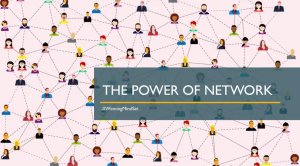Fraud and corruption posses a big threat to corporate success. As custodians of financial resources, the accountants’ role is more than writing cheques and books of accounts. The role has evolved to include implementing policies and procedures aimed at preventing fraudulent practices, and where a fraud occurs, implementing controls to prevent re-occurrence. To discharge their role effectively, accountants must acquire fraud prevention and management skills.
One of the ways of managing corruption and fraud is through public awareness of the risk. In these anti-fraud and corruption series, we explain how fraud and corruption occur and ways of managing the risks.
Let’s start with the fraud risk.
In any organization, small proportion of staff act dishonestly implying that all organizations (private or public) are vulnerable to the fraud risk.
What is fraud?
According to the Association of Certified Fraud Examiners (ACFE) fraud is any intentional act committed to secure an unfair or unlawful gain. At a country level, corruption and fraud deprives the masses of necessities like education, lifesaving drugs, etc… Equally, at an organizational level, fraud causes mistrust and in fighting among staff, as everyone becomes a suspect and shares the blame when profits fall. Fraud occurs in many ways including:
- Conflicts of interest (e.g., drug/ alcohol abuse, part-time work by full-time employees, etc…
- Corruption – mainly kickbacks to provide a service that is otherwise free of charge.
- Theft of assets (pick and carry stealthily). Many people steal their ‘own’ assets (mainly laptops, phones, memory sticks, money, etc…) provided at the workplace, then report to Police and later own the assets after the organization gives up with Police.
- Technological abuse e.g. computer related fraud, unauthorized internet browsing, use of company computers for part-time consultancy work, printing private work using company stationery and resources, doing personal business on official trips etc…
- False reporting or falsifying performance e.g. manipulating financial results, false accounts, etc… This type of fraud is commonly done by some companies listed on a stock exchange, since management want to show a good picture to the investors and potential investors. The practice is also common by agents in the agency/ principal relationships.
What drives fraudsters?
Fraudsters have a motive, exploit an opportunity, and usually rationalize their actions. The three things – motive, opportunity and rationalization are called a fraud triangle. Given the right pressures (motives), opportunity, and rationalization, many employees (if not all) can commit fraud. In fighting fraud, we therefore ensure that staff are not given the opportunity at their work place, since most fraudsters tend to have a motive and rationalization. The motive and rationalization are outside the control of the organization, and as a result, all winning organizations focus on eliminating the opportunities available to the fraudsters by investing in checks and balances (also known as internal control systems).
Motive is what drives the fraudster to cheat. The desire to get money and fulfill a need. Common motives are to finance:
- Excessive spending to keep up appearances of wealth (you remember the Pastor of the ‘Kiwedde’ fame.) Many people, after getting used to a certain life styles, cannot let go, and resort to fraud.
- An illicit romantic relationship (want to get money to finance an outside relationship).
- Other outside business financial strains (most employees have huge bank loans, and this puts strain on their lifestyle, as monthly salary deductions eat into a decent daily meal given the ever-increasing food prices).
- Gambling, alcohol, drug abuse problems, etc… all these drive people to live beyond their salaries.
During fraud investigations, investigators focus on identifying the motive, in order to zero on the prime suspects. People with a motive (as all staff have) are more likely to commit fraud as long as the staff have means and opportunity.
Opportunity arises due to weaknesses at the work place resulting from weak or lack of internal controls. In situations where a person is in a position of trust, couple with lack of segregation of duties e.g. the person who sources for suppliers also approves payments and is the signatory. However, trustable this person might be, he will be tempted to steal due to poor controls in place. S/he has the opportunity.
Rationalization or lack of integrity is whereby the employee steals after convincing him or herself that s/he is right to steal. Such reasons may include:
- “Borrowing” money temporarily (e.g. in one of my fraud assignment, we discovered that some staff in a bank would withdraw money from ‘fat’ individual or corporate bank accounts and redeposit it hours or days later. Ushs. 10 billion for one day is worth millions of Shillings – in inter-bank money lending or short maturity treasury bills business. Similarly, people play around with petty cash).
- Justifying the theft out of a sense of being underpaid (“I was only taking what was mine”) or justifying the theft out of a sense of being denied a promotion (“I’ve been in this company for long, I deserve a better position which has good benefits and pay”)
- Depersonalizing the victim of the theft (“I wasn’t stealing from my boss; I was only taking what was mine. I have done a lot for this company”)
Fraud problem occur in many ways and fraudsters are increasingly improving their act. As many companies are investing in IT, so have fraudsters. Cyber crime and technology fraud is on the rise than ever before, and the scale of on-line fraud is very huge. Everyone is vulnerable. Many professional consulting firms provide anti-fraud solutions. Professional fraud investigators help organization identify culprits, if any, but most importantly clear the names of the innocently accused. In the next article, we look at short case study on how you can identify key suspects and the best ways of dealing with the identified culprits.
Copyright 2019 Mustapha B Mugisa. All rights reserved.


